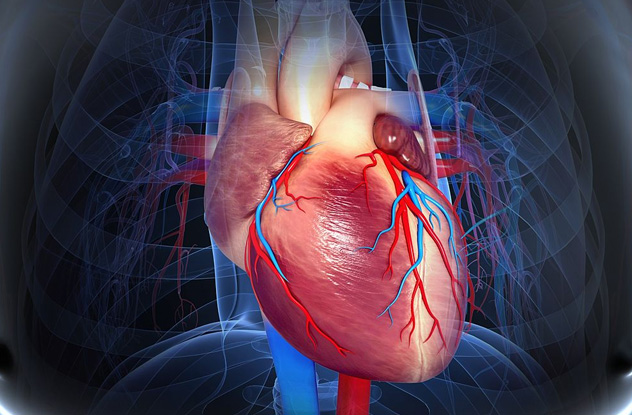 Our World
Our World  Our World
Our World  Movies and TV
Movies and TV The 10 Coolest Stars to Set Sail on The Love Boat
 History
History 10 Things You Didn’t Know About the American National Anthem
 Technology
Technology Top 10 Everyday Tech Buzzwords That Hide a Darker Past
 Humans
Humans 10 Everyday Human Behaviors That Are Actually Survival Instincts
 Animals
Animals 10 Animals That Humiliated and Harmed Historical Leaders
 History
History 10 Most Influential Protests in Modern History
 Creepy
Creepy 10 More Representations of Death from Myth, Legend, and Folktale
 Technology
Technology 10 Scientific Breakthroughs of 2025 That’ll Change Everything
 Our World
Our World 10 Ways Icelandic Culture Makes Other Countries Look Boring
 Our World
Our World 10 Ways Your Christmas Tree Is More Lit Than You Think
 Movies and TV
Movies and TV The 10 Coolest Stars to Set Sail on The Love Boat
 History
History 10 Things You Didn’t Know About the American National Anthem
Who's Behind Listverse?

Jamie Frater
Head Editor
Jamie founded Listverse due to an insatiable desire to share fascinating, obscure, and bizarre facts. He has been a guest speaker on numerous national radio and television stations and is a five time published author.
More About Us Technology
Technology Top 10 Everyday Tech Buzzwords That Hide a Darker Past
 Humans
Humans 10 Everyday Human Behaviors That Are Actually Survival Instincts
 Animals
Animals 10 Animals That Humiliated and Harmed Historical Leaders
 History
History 10 Most Influential Protests in Modern History
 Creepy
Creepy 10 More Representations of Death from Myth, Legend, and Folktale
 Technology
Technology 10 Scientific Breakthroughs of 2025 That’ll Change Everything
 Our World
Our World 10 Ways Icelandic Culture Makes Other Countries Look Boring
Top 10 Fascinating Facts About Fear
Fear keeps a person alive. The brain has specialized centers, genes, neurons and tricks devoted to scaring the pants off you for that wallop of adrenaline to boost your chances of surviving a threat. This list is about some of the freakier things regarding how fear is activated, caught, and how it can even possibly kill the person it is trying to save.
10Fear-Encoded Neurons

During a bad fright, real or imagined, the jittery victim might experience some spectacular symptoms. Hyperventilating, unable to move, or bolting like a mouse, every reaction originates from a tiny part of the brain.
The walnut-sized amygdala remains a mysterious organ, but mice trained to fear a certain sound (signaling an electrical shock) revealed two facts about the brain’s fear center. Whenever the zapping cue was given, they recognized what was about to happen and froze. The compassion-challenged researchers discovered that certain groups of neurons inside the amygdala were encoded with memories of fearful experiences, a library storing past events they’ve learned were fearful. Secondly, the amygdala almost takes over the brain whenever it recognizes a potential threat. Everything gets suppressed to focus on the correct fear response.
9It’s Really Contagious

It’s been thought that people have lost the ability to smell the feelings of others. We might not match the way animals gather information via scent but this ability is present in humans.
What the nose picks up is not the actual feeling but its chemical signals. This capability may explain why others can be affected by a frightened individual or why crowds get spooked and stampede like a herd.
A study scared one half of a test group (all men) with a horror movie while showing the rest revolting clips. Women were then exposed to the sweaty results, and depending on which group’s scent they inhaled, they correctly showed alarmed or disgusted reactions. Women were chosen as the reactive group since they are more receptive to the opposite sex’s scent signals.
8It’s Inheritable

Lab mice were trained to associate the scent of cherry blossom with an electrical shock. Their pups and grand-pups were then all wary of cherry blossom, though they never received any shocks when exposed to the aroma.
Their caution might have something to do with epigenetics. This mechanism modifies the genetic code, turning certain genes off or activating others depending on the environment or experience of the individual. The two generations following the flower-fearing parents all had changed brains. Large areas were dedicated to recognizing the odor, perhaps to help them avoid what their ancestors recognized as a threat.
7Spare Fear Center

Since fear is so important to survival, nature made sure the brain’s fear center, the amygdala, has a backup. For some time, researchers knew that when damaged, another part of the brain took over its job. Tests determined that this part is the bed nuclei.
Rats with an impaired amygdala froze in the electrified cages they’ve been taught to fear, like normal brained rats. But those who had a damaged amygdala and bed nuclei showed a significant failure when remembering dangers.
Under normal circumstances (if one can call an amygdala shutdown that), the bed nuclei would activate only if the main fear center is disabled. However, this backup circuit isn’t always glitch-free. Anxiety disorders in some people might be caused if the amygdala’s “active” signal is somehow not received by the bed nuclei, which then activates. With both centers working, a person can get overwhelmed with too much of a fear response.
6Mind Marijuana

Brain chemicals called endocannabinoids belong to the same group of cannabinoids that make marijuana such a worldwide favorite. The ones the brain produces possibly exist to overwrite bad memories. Trails on mice (that’s right, they got shocked again), determined that there is a circuit between two areas of the brain, both involved with restraining emotion and decision making.
When there is increased activity in the amygdala and the ventromedial prefrontal cortex, triggered by endocannabinoids, this circuit appears to help with the formation of safe new memories. In the mouse tests, the animals that received more artificial stimulation to this circuit were better able to overcome their fear of a certain stimulus. While there’s no permanent erasure, they do appear to help fade the memories born of trauma and sometimes even block them.
5Love Is The Antidote

Produced in a marble-sized area near the base of the brain called the hypothalamus, oxytocin has been credited with giving new mothers the courage to act where others freeze in fear. Nature gives women this hormone in spades during childbirth to reduce the fear and stress of the event since it is a feel-good chemical. During lactation, its levels remain elevated and is essential for mother-child bonding. As a bonus, oxytocin is also critical to overcome fear. This boosts mothers’ courage and speed to protect their infants during danger.
While new moms are packed with the stuff, it’s certainly not exclusive to them. Anyone can experience this fear-killing phenomenon given the right circumstances. And it’s nearly instantaneous. During a hairy situation, the hormone gets injected into the amygdala within seconds via special cells leading from the hypothalamus.
4Reality Distortion

A study has found that fear can make a threat look worse than it really is. While certainly it doesn’t happen in every case, people who particularly fear something, like spiders, are less likely to correctly guess the creature’s size and perceive it to be bigger.
The same visual miscalculation has been found to happen with those who are afraid of heights—they often overestimate the true distance to the ground when looking over a balcony. Those who dread small spaces or wide open areas suffer from spatial distortion; claustrophobics tend to underestimate horizontal distances while acrophobics exaggerate the vertical.
Most people have experienced time going slo-mo during an emergency. This time warping is a memory-related illusion. The more memories you have of an event, the longer you believe it lasted. During a crisis, the amygdala adds extra memories to the present circumstances, and since the person experiences such a rich memory response, time appears to slow down.
3Fears Heal During Sleep

For a change, researchers electrocuted human subjects instead of mice. They zapped the frazzled volunteers every time they viewed a particular face in an image lineup. Along with the face and shock, researchers released a certain odor to link to the unpleasant experience. The participants then napped and unknowingly inhaled the odor without the associated electrical shock. Brain scans showed areas involving memory quieted down and upon awakening; the volunteers weren’t so wary of the face as before.
To test if sleep alone was behind this dampening effect, the volunteers were taught to fear a different face, but its own unique odor wasn’t released during their nap. Unlike the first image, participants still dreaded the second face after they woke up. A group that stayed awake feared both.
For some reason, sleep provides a mysterious state where a received stimuli (like the odor) allows for a desensitizing effect.
2The Fear Gene

There is a gene called stathmin, and it divides those who can jump out of a plane and the people who can’t even get on a plane. Stathmin is usually active in the amygdala and is responsible for what one might consider instinctive fears—heights, dangerous animals, and the unknown but also remembering fearful experiences.
Laboratory mice who lacked the gene braved open spaces and even took electrocution tests better than the stathmin-carrying rodents. The second batch were more sensitive to dangers. When they encountered a situation that provoked natural caution—like an open space—or a taught fear, such as a particular sound right before an electrical shock, their self-preservation took priority. Their brains fired, unlike the stathmin-free mice.
1Fright Can Be Fatal

You can literally be scared to death. Whether it’s a particularly vivid Halloween prank or a home invader pointing a gun at you, something involuntary occurs inside the human heart. When the fight-or-flight response is triggered, the body needs extra strength. For that, the heart needs to beat stronger, something made possible by an injection of calcium into heart cells.
If a person can’t calm down or the shock is simply too overwhelming, calcium and adrenaline keep pouring in. That fast pumping that was needed to temporarily enable the body to fight or run for the hills now cannot stop. Instead of beating, the heart trembles. If this is not treated, it can lead to a drop in blood pressure, unconsciousness, and ultimately death. People with healthy hearts can die this way, and cardiac patients face a higher risk.








